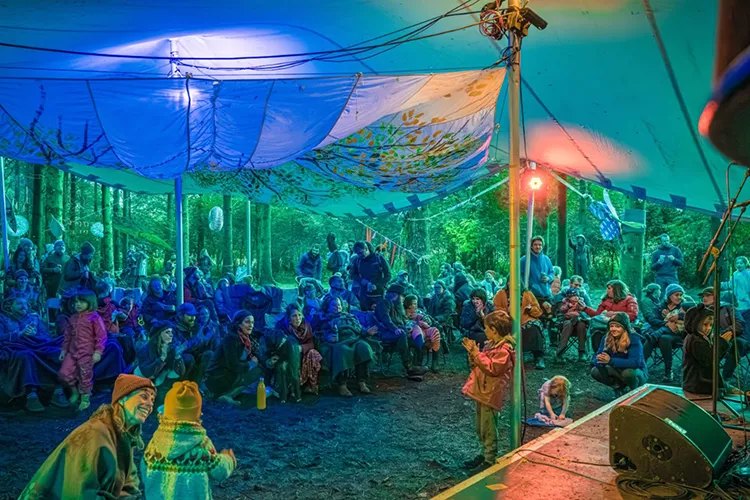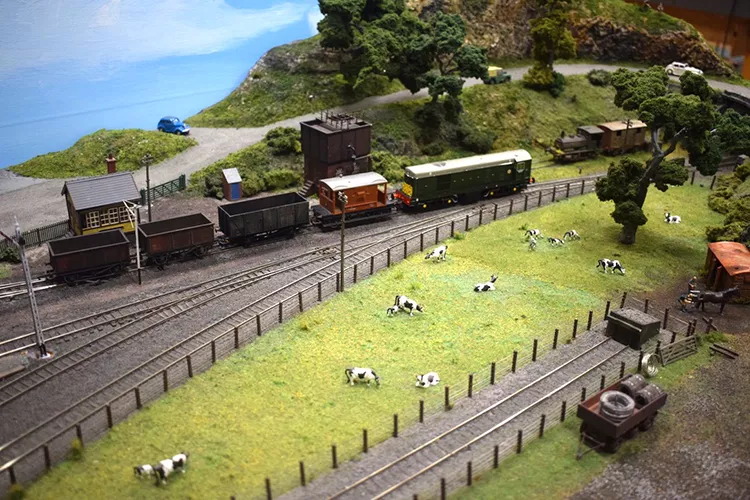
Vogrie Pogrie, the annual celebration of creativity, innovation, and community spirit, is back for its fourth consecutive year from Friday 13th to Sunday 15th September 2024 at Vogrie Country Park.
Early bird tickets are now on sale, offering attendees the chance to secure their spot for a weekend filled with open-air performances, creative happenings, and the unmistakable magic that only Vogrie Pogrie can offer.
Vogrie Pogrie invites individuals of all ages and backgrounds to join in the festivities, whether flying solo, with family, or accompanied by furry friends. The event promises a welcoming atmosphere where everyone can find their Pogrie.
Attendees can look forward to convenient transportation options, including a FREE Shuttle Bus running from Gorebridge Railway Station, making it easier than ever to reach the festivities.
Entry: is FREE for those arriving on foot, by bike, or via the shuttle bus. For those arriving by car, parking is available at £5 per vehicle, encouraging attendees to fill their cars and carpool to minimise environmental impact.
Camping enthusiasts can secure their spot with Early Bird Camping tickets starting at £30 for adults and £5 for kids, offering a unique opportunity to immerse themselves in nature throughout the weekend.
As part of Vogrie Pogrie’s commitment to environmental sustainability, the festival has implemented various initiatives to minimise its ecological footprint. From using small structures made of natural and reused materials to favouring interactive performances, Vogrie Pogrie strives to celebrate creativity in harmony with nature.
Vogrie Pogrie embodies values of inclusivity, creativity, and environmental stewardship, offering a platform for individuals to discover and embrace their unique creative spirit while leaving a positive impact on the community and the world.
For more information and to purchase tickets, visit www.vogriepogrie.com.


Thistle Modelmakers, a group based in the Mayfield Industrial Estate in Dalkeith, will be attending with a layout representing the fictional town of St Cuthberts.
Martin Stewart, a talented Midlothian railway modeller based in Bonnyrigg, has built a highly detailed model of a typical station on the picturesque West Highland Railway to a scale of 1:76, the most popular scale for model railways.
The model, which has been named ‘Tulloch Bridge’, features bespoke items made using both 3D printing and laser cutting technologies and is operated using models of the trains that traversed the line between the years 2004 and 2012. Although Martin has exhibited his layout at several model railway exhibitions since he completed it in 2022, June 2024 will be the first opportunity that the public will have to view this excellent layout in Edinburgh.
The Edinburgh and Lothians Miniature Railway Club (E&LMRC) are holding their first model railway exhibition for many years in the Senior School Assembly Hall at George Watson’s College, Colinton Road, Edinburgh, EH10 5EG on Saturday 1 and Sunday 2 June 2024, where Martin’s work will be on display between 10am and 5pm each day.
Martin said, “I’ve always thought Edinburgh is missing an exhibition, so it’s great to be able to participate in this event”.
Thistle Modelmakers, a group based in the Mayfield Industrial Estate in Dalkeith will also be attending with a layout representing the fictional town of St Cuthberts, set somewhere in the Scottish borders near Carlisle. The town is served by a small station with a regular passenger service and much of the local goods for shops and farms arrive and depart by rail, as the layout represents the late 1950s, a period where no one has heard of anyone called Dr Beeching.
In total, this new exhibition will feature 13 layouts from across Scotland in five different scales/gauges with six traders and two societies also attending.
The Club’s secretary said, “I’m grateful to all our traders for their support and confidence in launching this new exhibition in Edinburgh, allowing us to create a fun day out for collectors, enthusiasts, and families alike, with something on offer for all ages and interests”.
There will be a chance to operate one of the layouts yourself thanks to the Dundee Model Railway Club, who will be bringing ‘Dain’s Yard’: a small layout to allow you to practise your shunting skills.
The venue is fully accessible for all and there will be an on-site café serving a selection of hot and cold food and drinks to allow you to make this a great day out.
There will also be a raffle with over £400 worth of models from Rapido Trains UK as prizes, with the star prize being a Great Eastern Railway tram pack – will you be the lucky winner? The prototype was the inspiration for Toby the Tram Engine in the books about Thomas the Tank Engine: a character known to and loved by millions.
Tickets can be purchased on the day at a cost of £8 for Adults (16+), £3 for Children (5-15), and a Family ticket (2+2) will cost £18. However, advanced tickets can be purchased on-line at a discounted price through www.ticketsource.co.uk/elmrc until 31 May 2024.
A free family ticket is also up for grabs on the organiser’s Facebook page. To enter, visit www.facebook.com/EdinburghLothianMRC before the end of April. The lucky winner will be announced on 2 May 2024.
Full details of the layouts and traders that are attending are on the club’s website at elmrc.org.uk


Photo credit Fé Ngô.
Luca was Scotland’s top name for baby boys for the first time in 2023, according to new figures released by National Records of Scotland (NRS).
Luca climbed four places to the top spot with 344 baby boys given the name. Last year’s most popular name, Noah, is pushed into second place, while Leo remains third.
Jack has dropped out of the top three names for boys for the first time since 1996, falling to fourth place.
Isla returns to the top slot for the first time since 2020, overtaking Olivia, the most popular name for girls in recent years. Freya is still the third most popular girls’ name.
In Midlothian Freya tops the chart for girls, with Leo the top name for a boy.
NRS Statistician Phillipa Haxton said:
“National Records of Scotland is pleased to welcome all of Scotland’s bundles of joy in 2023.
“There are more names in use today than there were in previous generations.
“The number of different names for boys reached a new all-time high in 2023, as did the number of unique names given to only one child in the year.
“The same pattern was observed for girls’ names, and the variety of names given to girls is still greater than for boys.”
Some of the names rising in use are associated with movies. Luca is now Scotland’s top name for baby boys, rising from 43rd in the charts before the release of the 2021 Pixar movie of the same name. Meanwhile the names of actors in the summer blockbuster movies Oppenheimer and Barbie further increased in popularity, with Cillian up 24 to 99th in the list and Margot up 57 places to 106th.
New entrants in the top 100 names include Oakley, which rose 64 places to 87th and Mabel, which leapt 102 places to joint 93rd.
Choices for baby names differ across Scotland’s 32 local authorities. Luca was top in seven areas and Isla in eight. Luca and Isla were top in Moray and North Ayrshire but Luca shared the top spot for boys with several names.
National Records of Scotland (NRS) is responsible for producing statistics on Scotland’s population.
The full publication Babies’ First Names 2023 including tables with local authority breakdowns and an interactive chart can be viewed online.